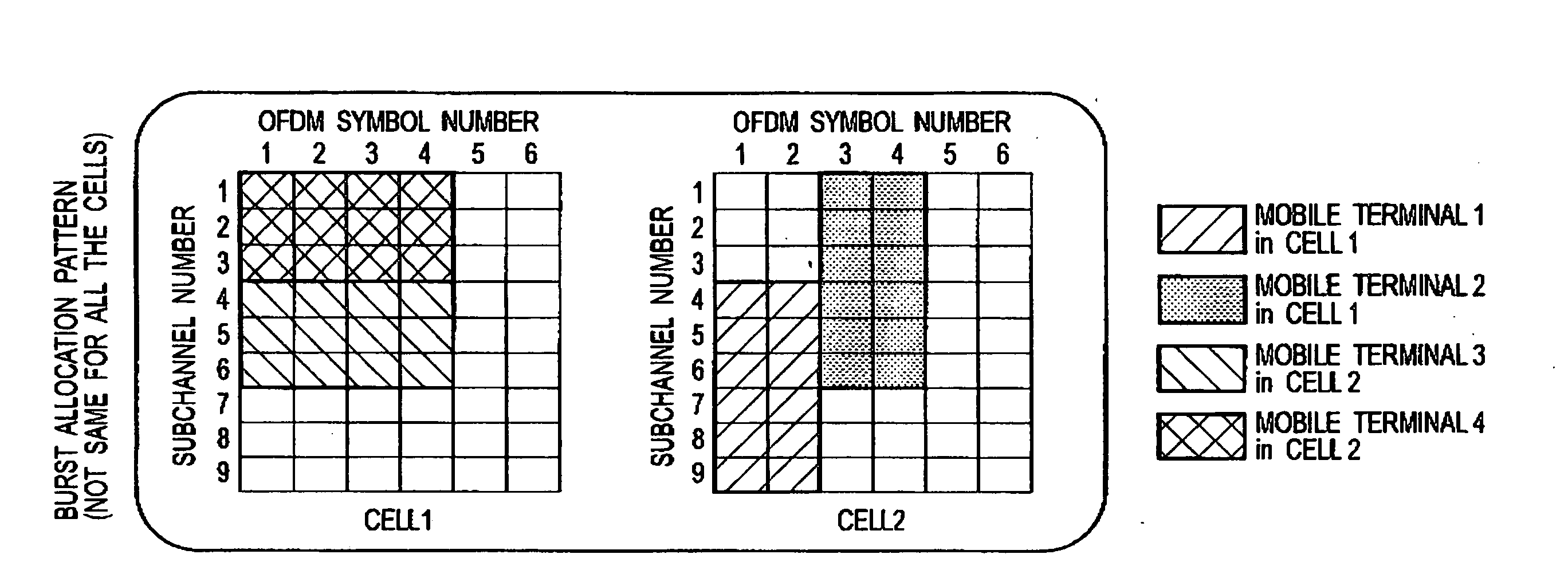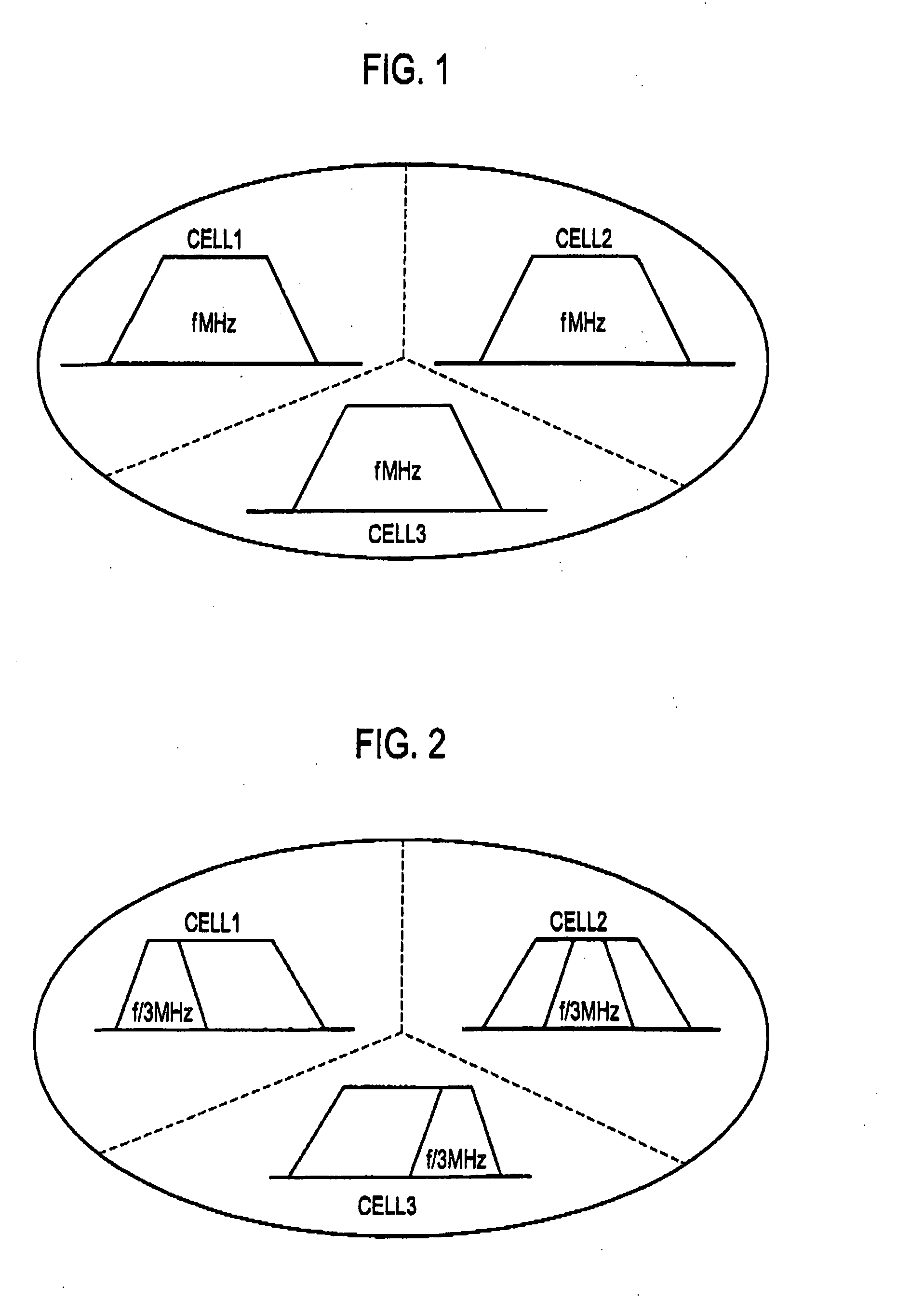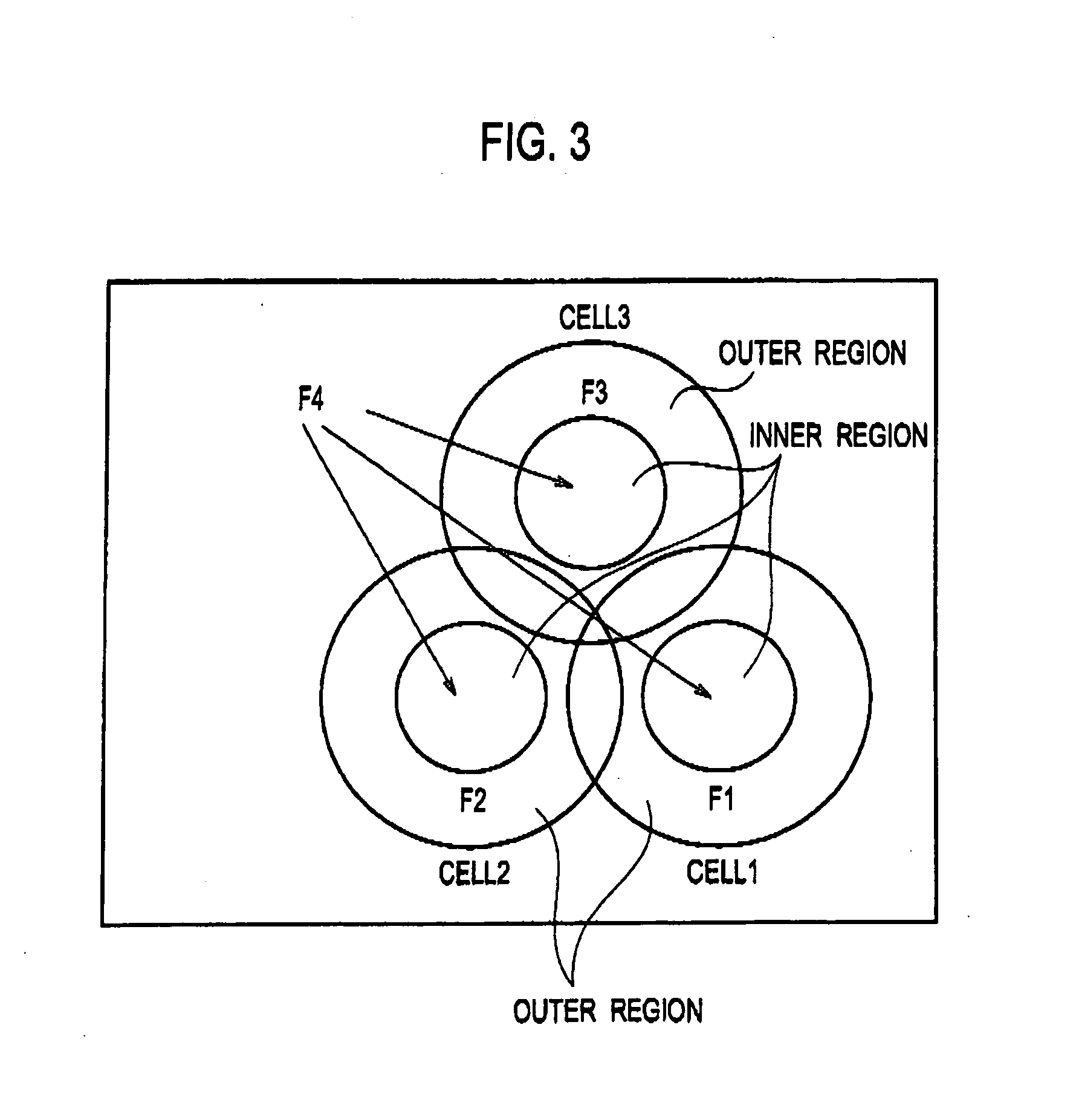Radio communication apparatus and radio communication method
a radio communication and radio communication technology, applied in the direction of multiplex communication, orthogonal multiplex, electrical apparatus, etc., can solve the problems of insufficient radio resources utilization, inability to provide sufficient communication quality (transmission rate, call loss probability, etc., to a mobile terminal (user) located at the edge of the cell, etc., to achieve the effect of suppressing the variation of inter-cell interferen
- Summary
- Abstract
- Description
- Claims
- Application Information
AI Technical Summary
Benefits of technology
Problems solved by technology
Method used
Image
Examples
first embodiment
Radio Communication System of the Present Invention
[0052]A radio communication system according to a first embodiment of the present invention is a multi-user communication system using an orthogonal frequency division multiplexing (OFDM) method as a multiplexing method.
[0053]In the radio communication system according to this embodiment, part of a plurality of subcarriers included in a single communication path is allocated to a single mobile station (user), which is known as an orthogonal frequency division multiple access (OFDMA).
[0054]In addition, in the radio communication system according to this embodiment, a cell is divided into an inner region and an outer region, as shown in FIG. 3.
[0055]In the inner region, used is a frequency band (indicated by F4 in the example shown in FIG. 3) that is the same as frequencies used respectively in the inner regions of adjacent cells. On the other hand, in the outer region, used is a frequency band (indicated by, F1 in the outer region o...
second embodiment
[0109]Hereinafter, a description will be given of a radio communication system according to this embodiment, focusing mainly on the differences with the radio communication system according to the above-described first embodiment.
[0110]In the second embodiment of the present invention, as shown in FIG. 8, a cell is divided into a plurality of inner regions and an outer region. An allocation controller 30 is configured to allocate quasi-orthogonal channels with different usage rates as subchannels available respectively in the plurality the inner region.
[0111]In this case, the allocation controller 30 sets a region using a quasi-orthogonal channel with a higher usage rate on the inner side than a region using a quasi-orthogonal channel with a lower usage rate.
[0112]In the example shown in FIG. 8, the allocation controller 30 allocates a quasi-orthogonal channel with a usage rate of 60% as a subchannel available in an inner region B, while allocating a quasi-orthogonal channel with a ...
third embodiment
[0118]Hereinafter, a description will be given of a radio communication system according to this embodiment, focusing mainly on the differences with the radio communication systems according respectively to the above-described first and second embodiments.
[0119]As described above, in the first and second embodiments, the allocation controller 30 is configured to allocate fixed amount of subchannels as for the resources used in the outer region of each cell to the cells.
[0120]In this case, although an operation with an easy control can be achieved, there is a possibility that a large number of mobile terminals cannot obtain sufficient transmission rates in a cell with a high traffic in a case where a specific cell has a large number of unused subchannels with a low traffic while an adjacent cell has insufficient subchannels with a high traffic. This is because radio resources are restricted more than necessary even while a higher system throughput can be achieved by allowing these un...
PUM
 Login to View More
Login to View More Abstract
Description
Claims
Application Information
 Login to View More
Login to View More - R&D
- Intellectual Property
- Life Sciences
- Materials
- Tech Scout
- Unparalleled Data Quality
- Higher Quality Content
- 60% Fewer Hallucinations
Browse by: Latest US Patents, China's latest patents, Technical Efficacy Thesaurus, Application Domain, Technology Topic, Popular Technical Reports.
© 2025 PatSnap. All rights reserved.Legal|Privacy policy|Modern Slavery Act Transparency Statement|Sitemap|About US| Contact US: help@patsnap.com



